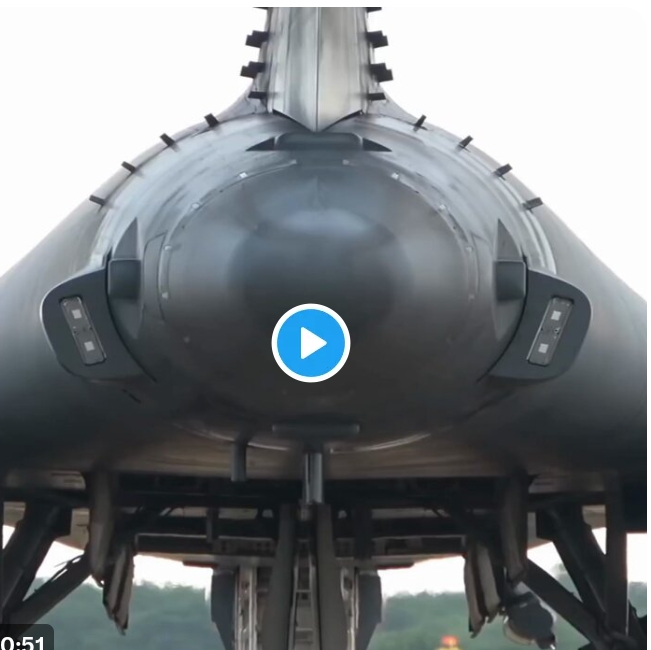NEWS
JUST IN: America Sends Two B-1B “Bone” Bombers South — The World’s Deadliest Strike Jet Takes Flight Stealth, supersonic speed, and nuclear capability — why is it headed to the Caribbean? 👉 CLICK TO UNCOVER THE REAL REASON BEHIND THIS MOVE

JUST IN: America Sends Two B-1B “Bone” Bombers South — The World’s Deadliest Strike Jet Takes Flight
Stealth, supersonic speed, and nuclear capability — why is it headed to the Caribbean?
👉 CLICK TO UNCOVER THE REAL REASON BEHIND THIS MOVE
JUST IN: America Sends Two B-1B “Bone” Bombers South — The World’s Deadliest Strike Jet Takes Flight
Stealth. Supersonic speed. Nuclear capability.
The U.S. Air Force has just sent two B-1B Lancer bombers—nicknamed the “Bones”—to the Caribbean, sparking global attention and raising one burning question:
Why now? And what message is Washington trying to send?
👉 CLICK TO UNCOVER THE REAL REASON BEHIND THIS MOVE
A Bold Show of Force in the Sky
In the early hours of this morning, the U.S. confirmed that two B-1B Lancers took off from an American airbase and headed south toward the Caribbean region. These aren’t ordinary aircraft—they are long-range, multi-mission strategic bombers capable of:
Carrying 75,000 pounds of bombs—the most of any bomber on Earth
Flying faster than sound (Mach 1.25)
Penetrating advanced air defense systems using stealth technology
Delivering nuclear or conventional weapons anywhere in the world
The B-1B isn’t sent on routine flights. When it appears—the world pays attention.
So Why the Caribbean?
Experts believe there are three powerful reasons behind this sudden move:
1. Rising Tensions in the Region
Recent intelligence reports suggest growing military cooperation between U.S. rivals and Caribbean or Latin American governments. The U.S. may be signaling:
“We’re watching. Don’t test us.”
2. A Direct Message to Russia, China, and Iran
With Russian warships rumored near Cuban waters and whispers of Chinese radar systems in the Caribbean, the arrival of the B-1Bs serves as a clear deterrent.
This is no drill—it’s strategic positioning.
3. Reassuring Allies
The U.S. move isn’t just about threats—it’s also about support. Allies in the region, including Colombia and Dominican Republic, have requested increased American presence as tensions rise. The B-1B deployment is America saying, “You’re not alone.”
What Makes the B-1B So Dangerous?
Feature Why It Terrifies Enemies
Speed Supersonic – outruns most modern fighters
Range Can fly 7,500 miles without refueling
Weapons Carries precision missiles, bunker busters, and nuclear payloads
Stealth Designed to evade radar and advanced anti-air systems
Nickname “The Bone” — from its code “B-One”
Is This a Warning… or a Preparation?
Military analysts are debating two possibilities:
Warning Shot: A calculated show of strength to deter foreign influence near U.S. borders.
Operational Preparation: Quietly positioning strike forces in case a conflict or crisis breaks out in the coming weeks.
Either way—this deployment is anything but routine.
What Happens Next?
Will more U.S. bombers or naval fleets follow?
Is Washington preparing for a larger operation?
How will Russia, China, and regional governments respond?
One thing is certain: the skies over the Caribbean just became the most closely watched in the world.
👉 CLICK NOW to uncover the classified reasoning behind this mission and what it means for the future of global security.
Would you like me to turn this into a Facebook post, YouTube script, or short-form TikTok narration?
?











